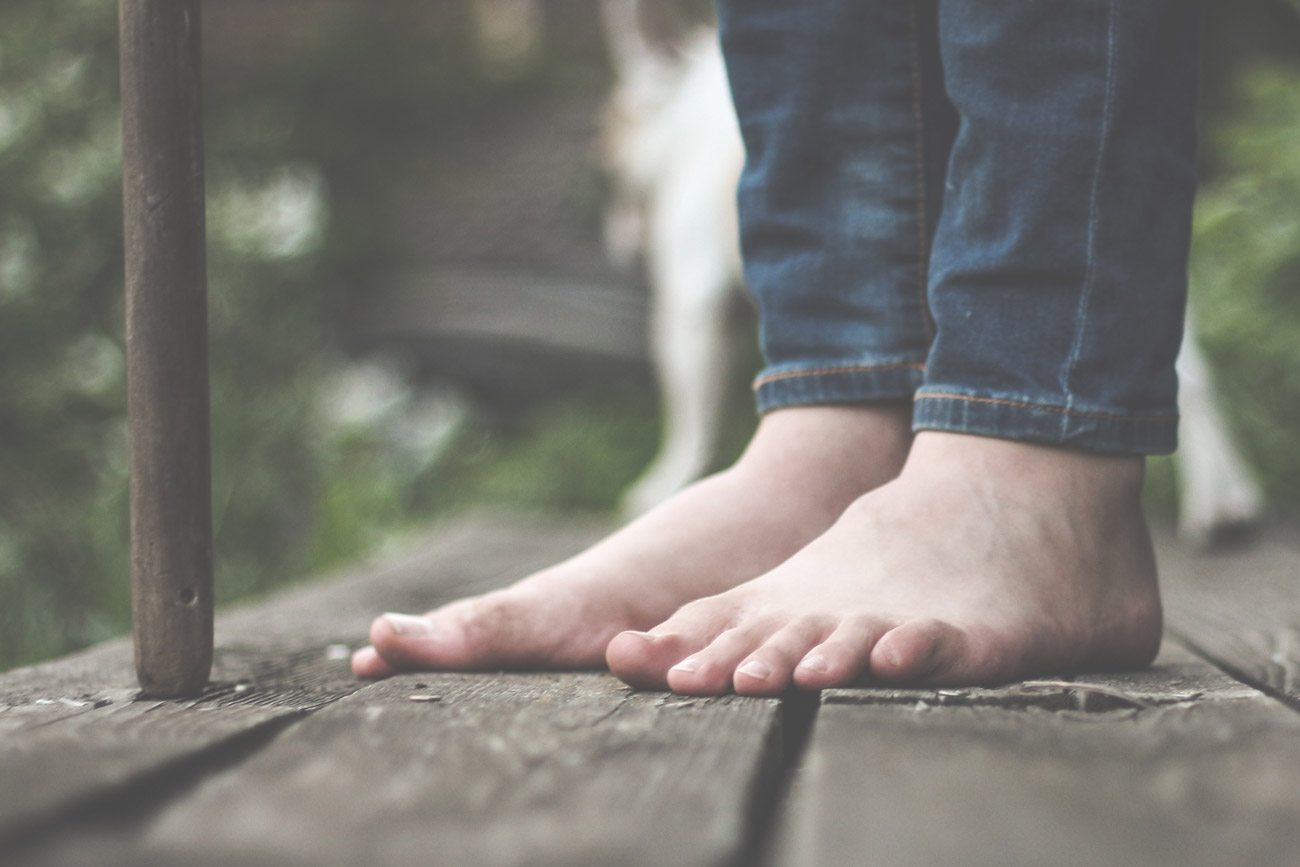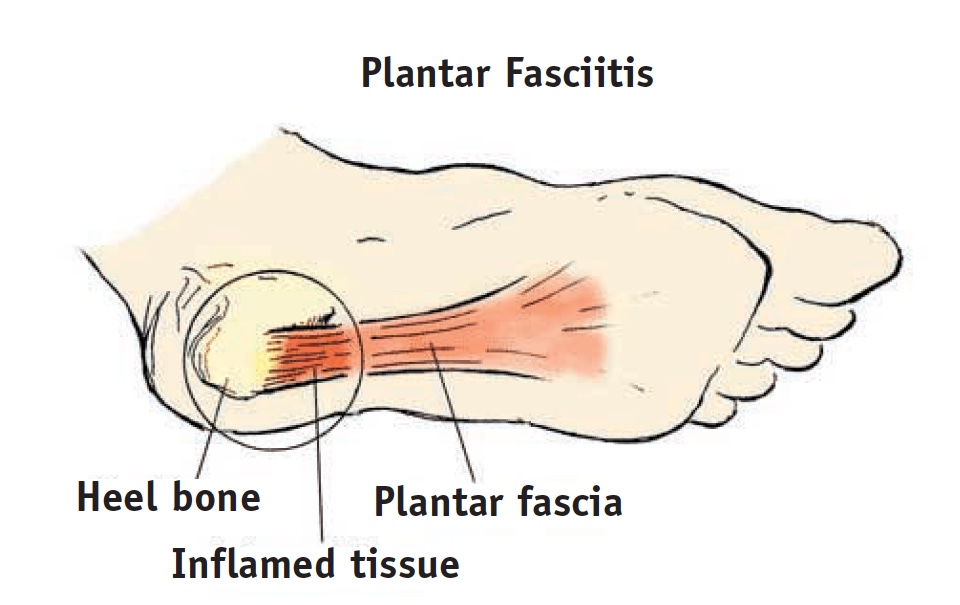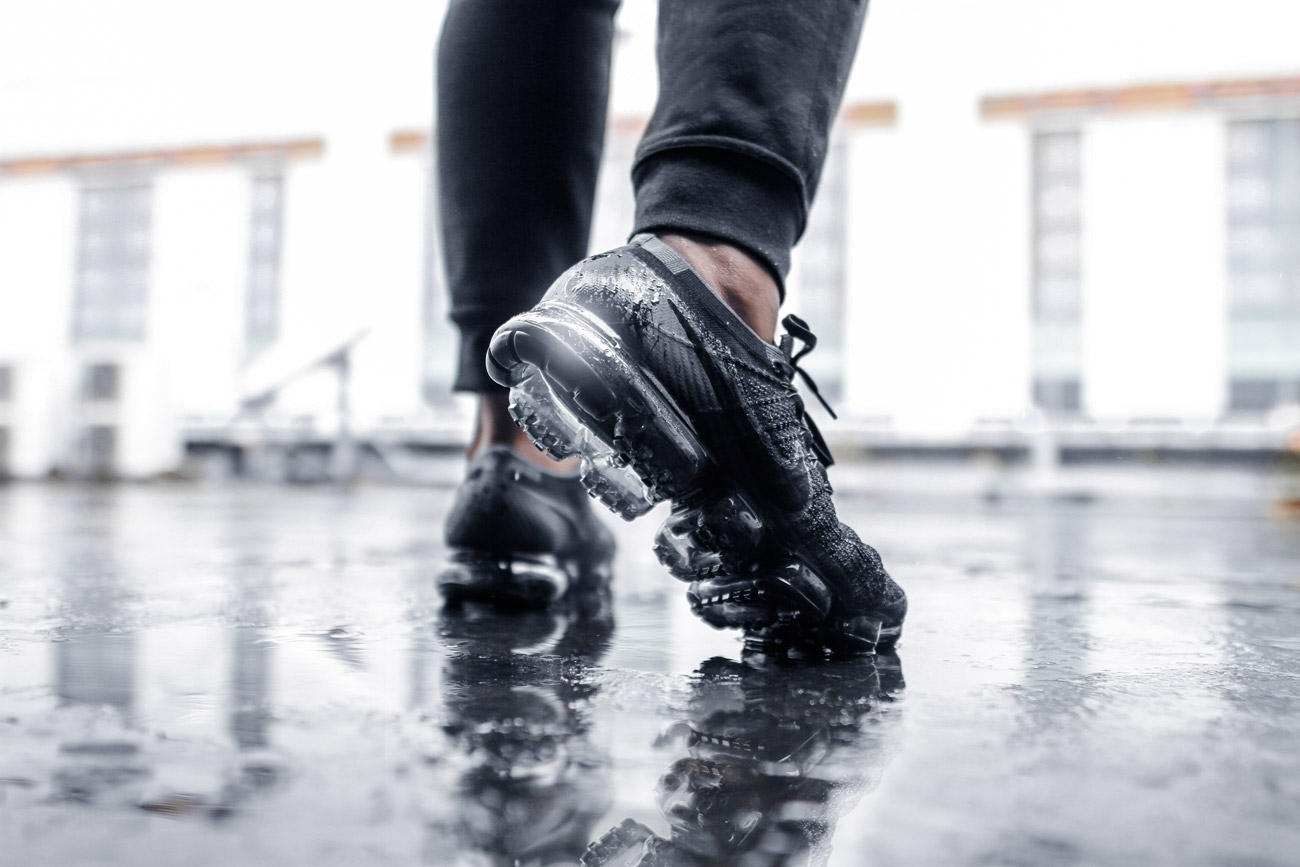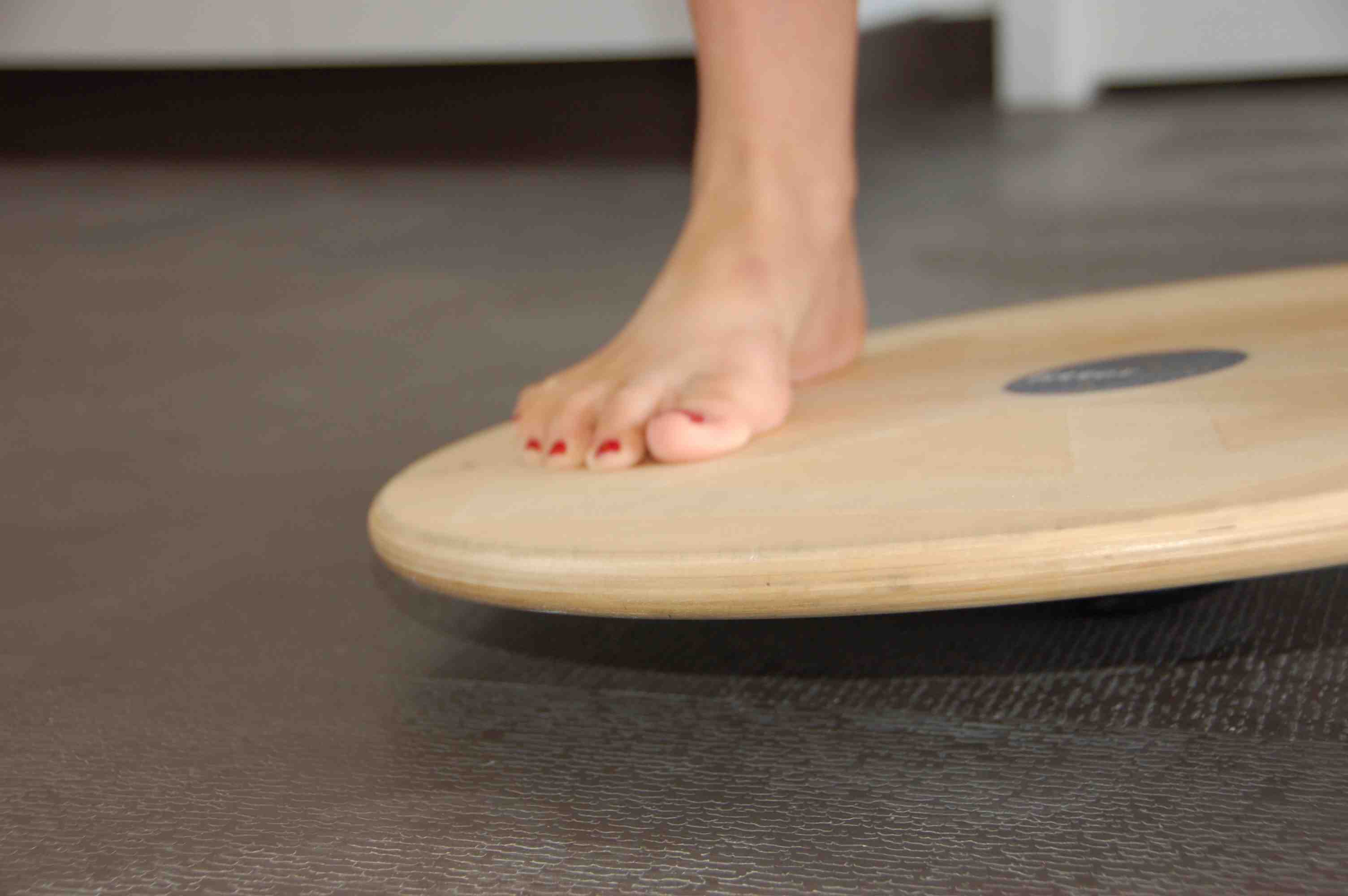RESOURCE LIBRARY
What is Plantar Fasciitis?
Plantar fasciitis is a painful inflammation of the plantar fascia – a thick, fibrous band of connective tissue in the sole of the foot that supports the arch of the foot.
It runs from the ball of the foot to the heel, stretching to its limit when the foot is on the ground and supporting your full body weight. When placed under excessive stress, the plantar fascia stretches too far and tears, resulting in inflammation. The effects of the stress can build up gradually or be the result of a sudden occurrence.

Plantar fasciitis can be most painful in the mornings
Image via Unsplash.
The most common causes of plantar fasciitis include:
• Flat feet;
• High arches;
• Sudden increase in activity;
• Increased weight gain,either from obesity or pregnancy; and
• Poorly fitting footwear.
The pain is commonly felt on the bottom of the foot, where the fascia attaches to the heel. It is most severe in the mornings when getting out of bed because the fascia is in a shortened position at rest, and when you stand up, the sudden stretch and load of your body weight pulls on the attachment.
Symptoms of plantar fasciitis vary from mild to severe. They can linger for months at a time, with pain increasing and decreasing in an unpredictable pattern. Often, discomfort may nearly disappear for several weeks,only to re‐emerge full‐blown after a single workout or change in activity. The pain may even temporarily ‘fade’ as you walk.

Plantar fasciitis is a common injury runners experience and along with the causes listed above,it can be triggered by a sudden increase in your training schedule,or by switching running surfaces – especially from a softer surface to a harder one. While plantar fasciitis can be treated,it does not resolve quickly. It pays to review each of the factors and try to prevent its onset.
The Canadian Physiotherapy Association (CPA)recommends the following S.M.A.R.T. approach to prevent plantar fasciitis from immobilizing you. S.M.A.R.T. is an acronym for Stretch, Move, Add it up, Reduce strain, Talk to a physiotherapist.

Find out how to prevent this common runner’s injury
Image via Unsplash.
Stretch
Stretch before, during (if needed) and after activity. Tight calf and/or hamstring muscles (back of thigh) limit range of motion and put extra strain on the plantar fascia. Stretching as a warm up and as a cool down will help you move easily, keep muscles flexible and relaxed, joints mobile and relieve tension and strain.
A physiotherapist can assess your injury and provide appropriate stretching and strengthening exercises that will promote an earlier return to your activity, as well as advice on how to prevent recurrence of injury.
Move
For mild cases of plantar fasciitis it may be enough to stretch more frequently, build more rests into your routine, and ensure you have good footwear.
More severe cases may benefit from a heel cup or orthotics. In its most severe form, going barefoot is a poor idea – even in the house.
Avoid worn-out shoes and try running on soft surfaces. You don’t have to stop exercising, however consider switching to a non-weight bearing sport like swimming or cycling. When you do try running again, begin at a much lower level of intensity and a shorter distance, then you can build up gradually.
Get back to doing what you love with these S.M.A.R.T. tips
Image via Unsplash

Add it up
Add up all of your symptoms. If there is tenderness on the inside bottom of your heel, especially when you first wake up in the morning, you may have plantar fasciitis.
Other symptoms can include:
• Diverse discomfort over rest of heel into the arch.
• Morning pain and stiffness is frequent as well as pain on standing after prolonged rest.Symptoms often occur only on one side ‐ Early stage: Pain after activity; Middle stage: Pain during activity; and Late stage: Pain at rest. Add up your risk factors. If you have foot pain and said ‘yes’ to any of the above causes, you can make important changes relatively simply.
• Change your level of activity – reduce the volume or intensity of training or simply reduce the amount of time spent on your feet;
• Change your footwear – Your shoes may be worn‐out. Look at the treads and pattern of wear on your shoes and get advice on better footwear at a specialized running store.
• Make sure all your shoes have adequate arch support.This may mean adding a simple arch support,or obtaining orthotics.
• If your weight is a contributing factor,consult a dietician for advice on a healthy weight loss plan.
• Avoid walking barefoot in‐doors. An athletic shoe is best as it provides cushioning and arch support,or “Birkenstock style” of sandal that has a contoured foot bed that includes a heel cup and some arch support.
Reduce strain
Early management of plantar fasciitis is important. It can become chronic and will often not resolve for a few years. A few tips:
Icing will help decrease the inflammation and pain. Put your foot on a frozen bottle of water or a bag of frozen peas wrapped in a tea‐towel,3 or 4 times a day for 5–10 minutes each time.Never ice more than once an hour to prevent risk of ice burn to desensitized tissue.
Stretches for the fascia, calf and hamstring muscles plus specific strengthening of foot and leg muscles will help to reduce symptoms, correct the problem and avoid re‐injury.
Establish an accurate activity history and implement modified active rest with non‐weight bearing activities such as swimming, cycling or running in water.
A foam ring support or heel cup in your shoe will help to alleviate pressure from the painful area.These can be home‐made or purchased from a drug store.
Taping the foot by a physiotherapist will reduce stress on the plantar fascia and improve foot biomechanics.
A physiotherapist can advise you on the benefit of motion control shoes or orthotics.
Talk to one of our physiotherapists to determine the best course of therapy for your plantar fasciitis.

Talk to a physiotherapist
Physiotherapy can help the healing process by reducing pain and inflammation, along with instruction in proper technique for stretching tight muscles in the foot and leg. This may include ice or heat and electrotherapeutic modalities like interferential or ultrasound. Taping the foot can help relieve symptoms and is a good indicator for the benefit of orthotics.
Physiotherapists are healthcare professionals who help people of all ages and lifestyles gain and maintain their desired level of active living and physical mobility. With their applied knowledge and understanding of the human body in action, physiotherapists are able to help you to increase your mobility, relieve pain, build strength and improve balance and cardiovascular function. Physiotherapists not only treat injuries,they also teach you how to prevent the onset of pain or injury that can limit your activity.
Call us at 604 568 4628 or book an appointment online today to see how our therapies can help you get back to doing what you love.
Used with permission from the Canadian Physiotherapy Association.
filed in
Latest Articles

The Anteriorly Tilted Pelvis
RESOURCE LIBRARY This post was written by Go! Physio Kinesiologist, Steve Dempster. The pelvis has several important functions. Its primary role is to support the weight of the upper body when sitting and to transfer this weight to the lower limbs when...

Cancer Surgery and Rehab
RESOURCE LIBRARY Go! Physiotherapy Physiotherapists at Go! Physiotherapy are equipped with clinical rehabilitation expertise, oncology specialization, manual lymphatic drainage certification (LANA), and decades of rehabilitation experience in exercise...

We are still open! How? Our response to the COVID-19 pandemic
LATEST NEWS Go! Physiotherapy Staff Dear Friends of Go! Physiotherapy, These are unprecedented times. It feels that by the time we have finished crafting this sentence, things will have changed. And we here at Go! Physio are rolling...

TeleRehab FAQs
RESOURCE LIBRARY Go! Physiotherapy Staff FREQUENTLY ASKED QUESTIONSDue to the COVID-19 pandemic affecting our community, we are committed to keeping our patients and staff safe by providing online video and phone calls (telerehab) until physical distancing measures...
Unlock Your Body’s Strength and Mobility Today
Book Online
Current patient? New, but know exactly what you’re looking for?
Contact Us
Never tried physiotherapy? Not sure where to start? Our friendly staff will guide you towards the best treatment for your situation.
Call: 604-568-4628
Email: go@gophysiotherapy.ca
